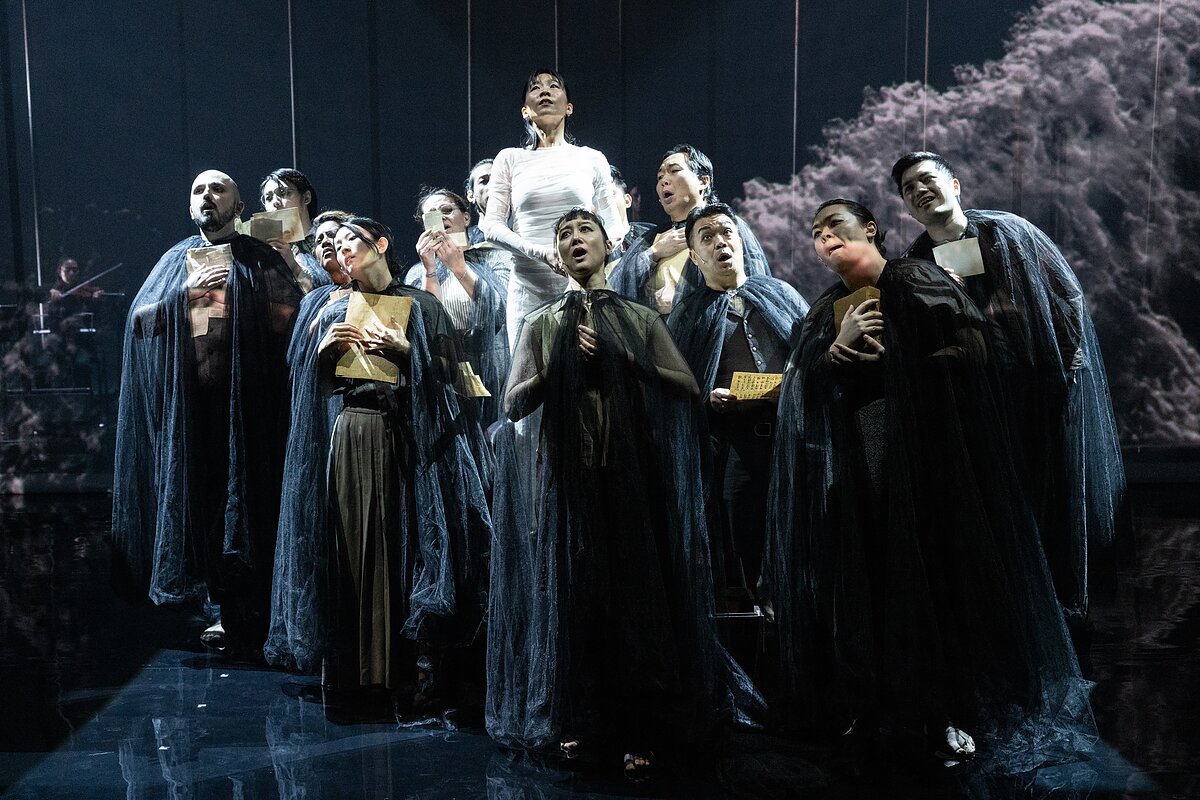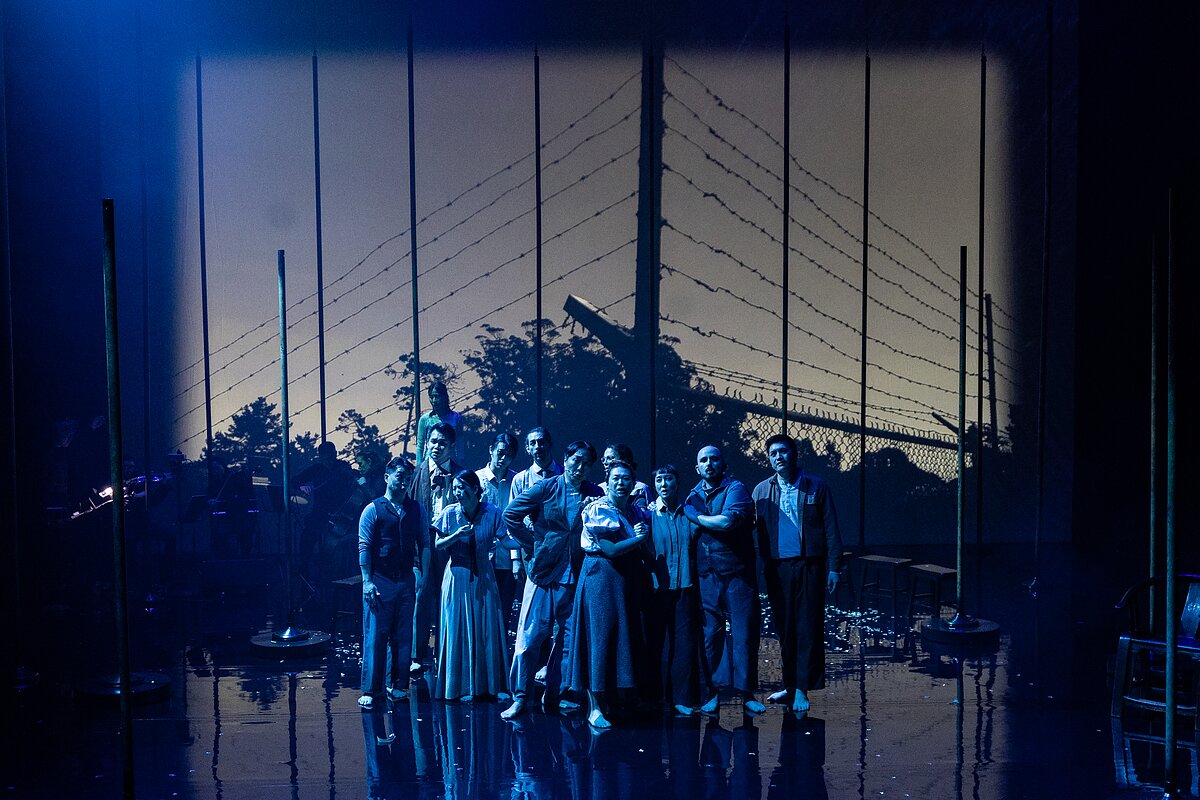“Angel Island” Ripples Through Chinese American History
Scrawled into the wall of an Angel Island detention center barrack is a century-old poem written in Chinese characters. “Here, several hundred of my countrymen are like fish caught in a net,” it laments. Between 1910 and 1940, about 175,000 Chinese immigrants endured the agonizing limbo of the Angel Island Immigration Station on San Francisco Bay. There, they endured interrogation, confinement, medical deprivation, rampant xenophobia, and, on top of it all, the ever-looming possibility of deportation. Many immigrants documented their tribulations in poems written on the walls of their cells.
In his eight-chapter experimental opera-oratorio, Angel Island, Chinese-born, New York-based composer Huang Ruo pays elegiac homage to these experiences, setting the poems against choral music.
Ruo’s libretto threads together decades of Chinese American immigration and disenfranchisement, from the Los Angeles Chinese massacre of 1871 to the Page Act of 1875 that barred entry of Chinese women to the oft-forgotten six Chinese survivors of the 1912 Titanic sinking.
During its recent run at Brooklyn Academy of Music, director Matthew Ozawa and assistant director-choreographer Rena Butler directed the opera with an atmosphere of solemn reverence upon designer Riw Rakkulchon’s minimalist set, with Bill Morrison’s film collages projecting images of the late 1800s and early 1900s America.
Butler’s modern choreography serves as the unifying factor between Morrison’s archival footage and contemporary sensibilities. There’s an undeniable renewed urgency in the presentation, as Ruo notes in the program, about anti-Asian rhetoric, scapegoating, and violence exacerbated by the COVID-19 pandemic.
The show opens with a solitary unnamed dancer, played by Jie-Hung Connie Shiau, clad in white and brushing an empty chair. When she opens a box, she unlocks an untold history of photos and documents, inviting singers from the Choir of Trinity Wall Street to engulf the theater space as phantoms of the immigrant voices. Ruo’s string quartet score (performed by the Del Sol Quartet) oscillates from meditative and elongated to throttling chugs, while actress Wai Ching Ho’s recorded narration guides us along.
Through the ethereal choral soundscape, the physicality of Butler’s ensemble conveys the corrosiveness of xenophobic laws like the Chinese Exclusion Act of 1882 on the bodies and psychologies of migrants. Bodies stagger with ocean waves. Bodies reach out to others, only to be barred from touching them. Bodies kneel before the earth to weep. Grief can feel like a stone lodged in the body.
In chapter five of Angel Island, the culture of American ignorance and stereotyping is spotlit. Actor Marc Kudisch’s recorded voice reads from Henry Josiah West’s 1873 text, “The Chinese Invasion: Revealing the Habits, Manners, and Customs of the Chinese.” West’s inflammatory rhetoric lambasting the “unvirtuous” Chinese women is underscored by predator-prey choreography between a white man and an Asian woman performed beneath the projected text.
The white male dancer (Benjamin Freemantle) snatches Shiau, who acts as a symbolic stand-in for the living descendants enduring modern anti-Asian violence, in an aggressive ballet. At first, the choir sits as horrified bystanders, an audience to the white man’s abuse of an Asian woman. Then, they take action by forming into a communal amoeba that extracts the lead dancer away from the white predator, constructing a literal lifeline with their bodies. Performed beneath West’s scrolling xenophobic rant, their movements expose the hypocrisy of the white male gaze upon Asian femme bodies.
In Ruo’s sixth chapter, titled “Buried Beneath Clay and Earth 噩耗傳聞實可哀,” the chorus reaches a summit, mourning a fallen immigrant. Voices warble into a spiral of sorrow, as if unable to purge the emotional weight from their bodies.
Still, the show ends with a cry of hope that crawls out from the final chapter, “The Ocean Encircles a Lone Peak 滄海圍孤峰.” In it, the choir traverses the boundary that separates the theater space and audience, traveling through the aisle, and enveloping us. Their movement concludes with the sounding of a gong paired with the image of water ripples. This closing image suggests that once a story is exhumed and told, the phantoms have their chance to pass into other worlds, into our consciousness, memories, and hearts. They are beckoning to carry their weight alongside them in the future.
—Caroline Cao has written about film, television, and theatre for five years. Her insights and wit can be read on TDF Stages, American Theatre, /Film, New York Theatre Guide, and Polygon. She is a voting member of the Outer Critics Circle. When she’s not watching theatre, she’s binging cartoons, cooking ramen, and writing fanfic.


